A NEW WEBSITE!Okay so in non-development related news, I've finally launched the new website!
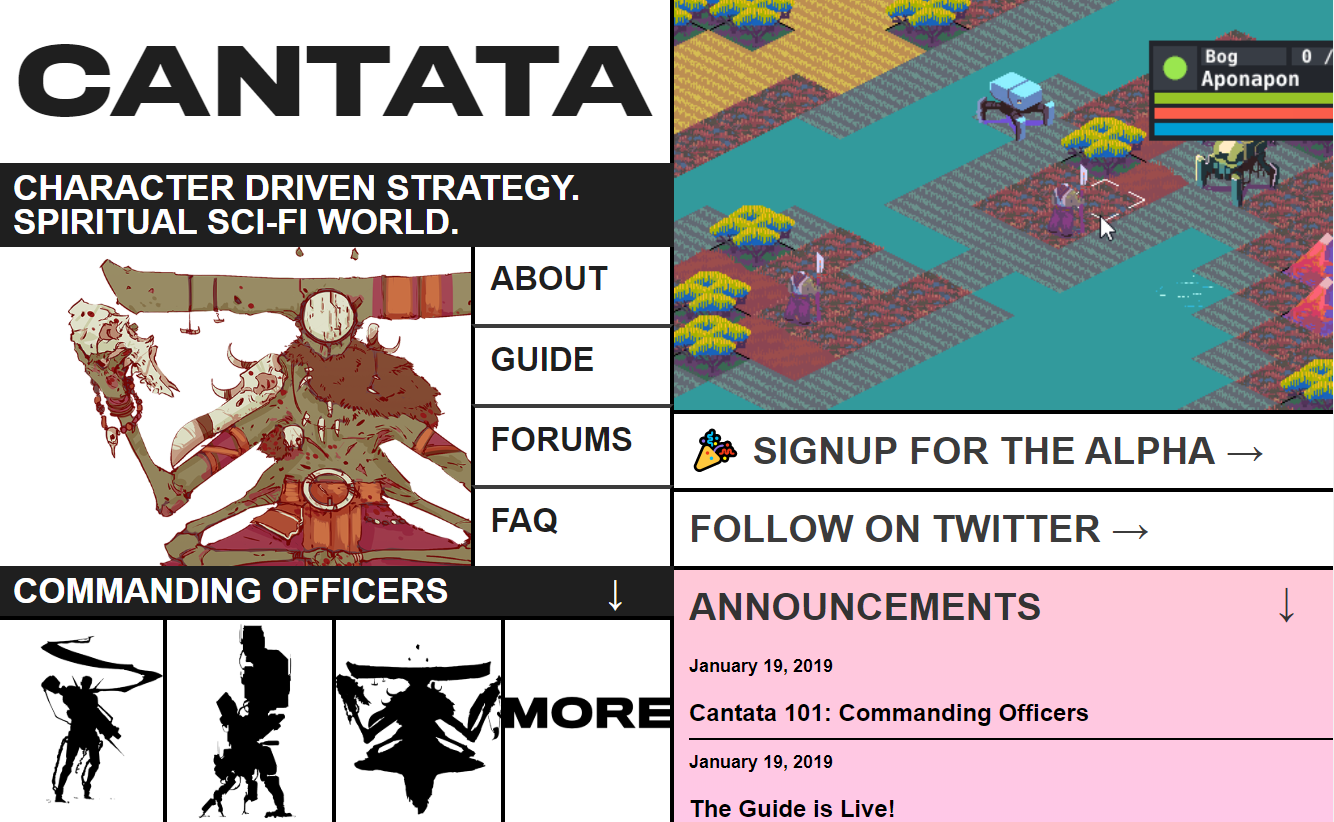
This is a pretty big deal for me, as the site is now meant to be a living portal into the world of Cantata and I'm looking forward to updating it more regularly with dev blogs, general announcements, and extra goodies.
www.cantata-game.comFORUMS!I've also launched a dedicated forum for the game!
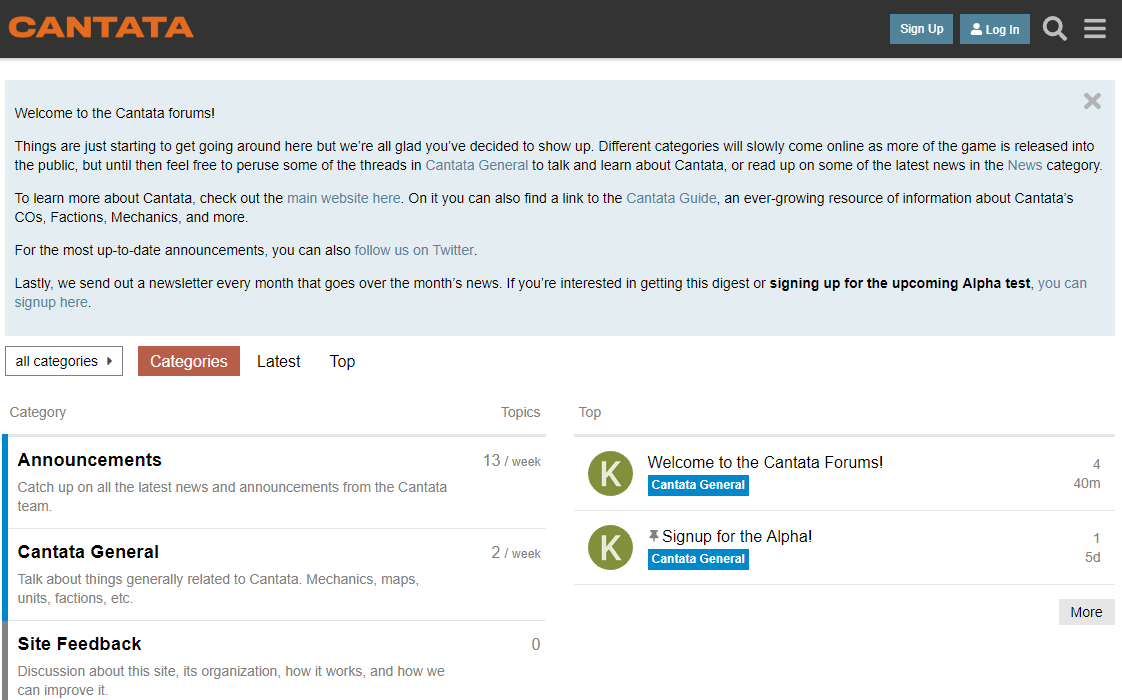
For now this is meant to server mainly as a place where people can respond to new announcements, but hope that over time it becomes
the destination for the game's community. I'd love it if people who were interested in the game from this thread could join here as well and introduce yourself!
forums.cantata-game.comTHE CANTATA GUIDE!Lastly, in conjunction with the site, I've also launched The Cantata Guide. You can think of it kind of like a back-of-the-box description of Cantata, existing somewhere between a wiki and the game's manual. This too is a living doc, and I'm excited to slowly flesh it out as I start to say more about what's actually in the game.
 Visit the guide here
Visit the guide hereThis all really represents big steps I'm taking in 2019 to start being more public about the game, so I'm excited to see what the reception is. Let me know what you all think.
WEBSITE DEV LOGFor more dev-loggy stuff about this work:
The WebsiteI built the website on top of a tool called
Webflow. It's kind of like squarespace, but a bit more powerful/complicated. It strikes me as kind of a modern Dreamweaver, and has you laying out divs/containers/etc. in a WYSIWYG manner. This also means that you're very much
visually coding your site without having to explicitly write div tags and other mundane stuff. I
really like Webflow/using Webflow, so much so that I also used it at my day job to build our new site. Working in it is super powerful and has lots of responsive web niceties with things like Flexbox (and now CSS grid) that lets you leverage those features without needing to actually code them.
Another added benefit is that Webflow has this idea of "Collections", which is basically a customizable CMS. This is how the announcements work. The announcements are a collection, and I have the collection placed in the website's pages. When I want to add a blog post, I just update the collection and it automatically appears on the site.
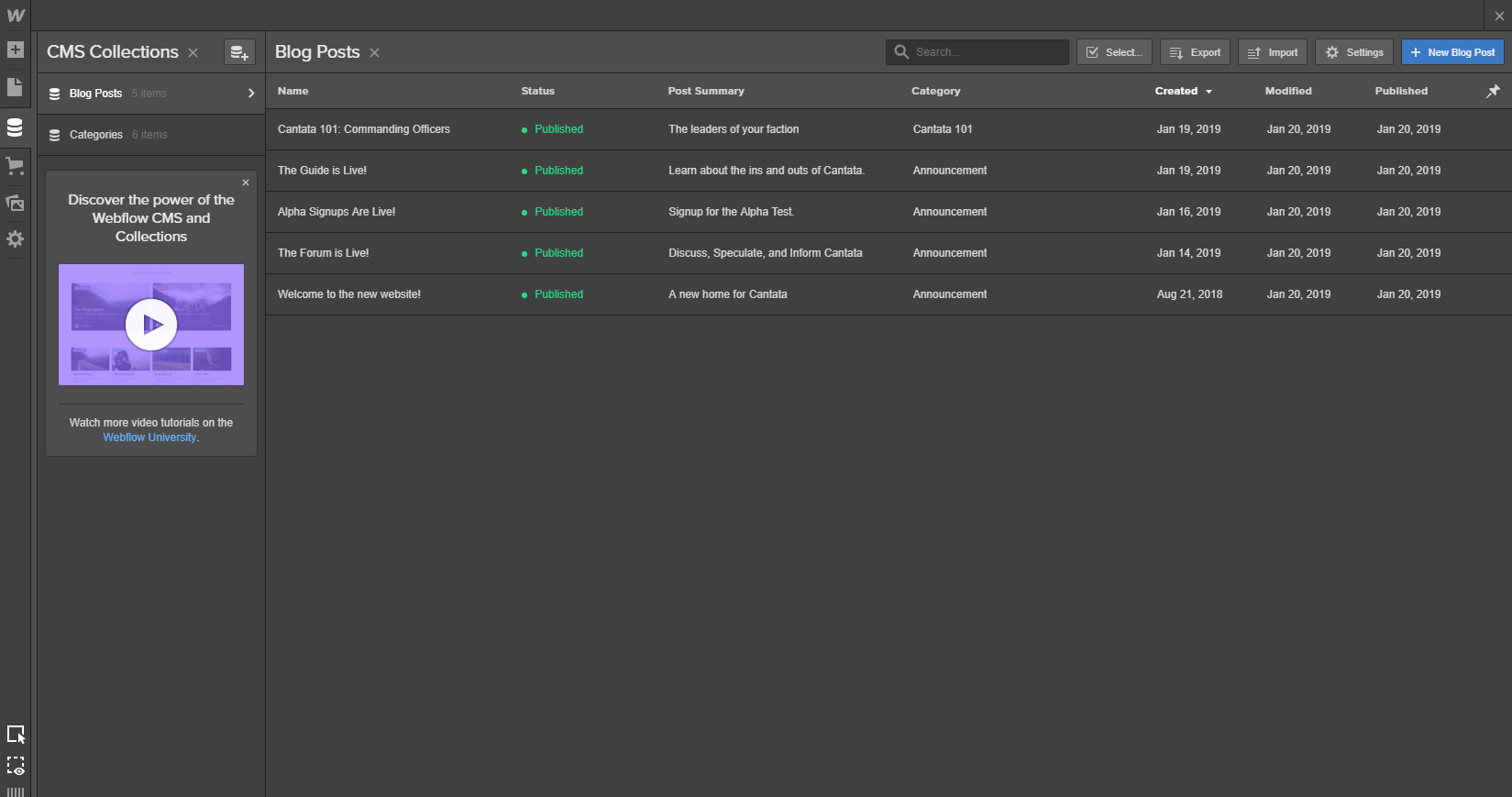
Not only this, but you can also have multiple collections of different types. What this allows me to do is dynamically link one collection element, like an announcement post, to a different item in a different collection, like categories:
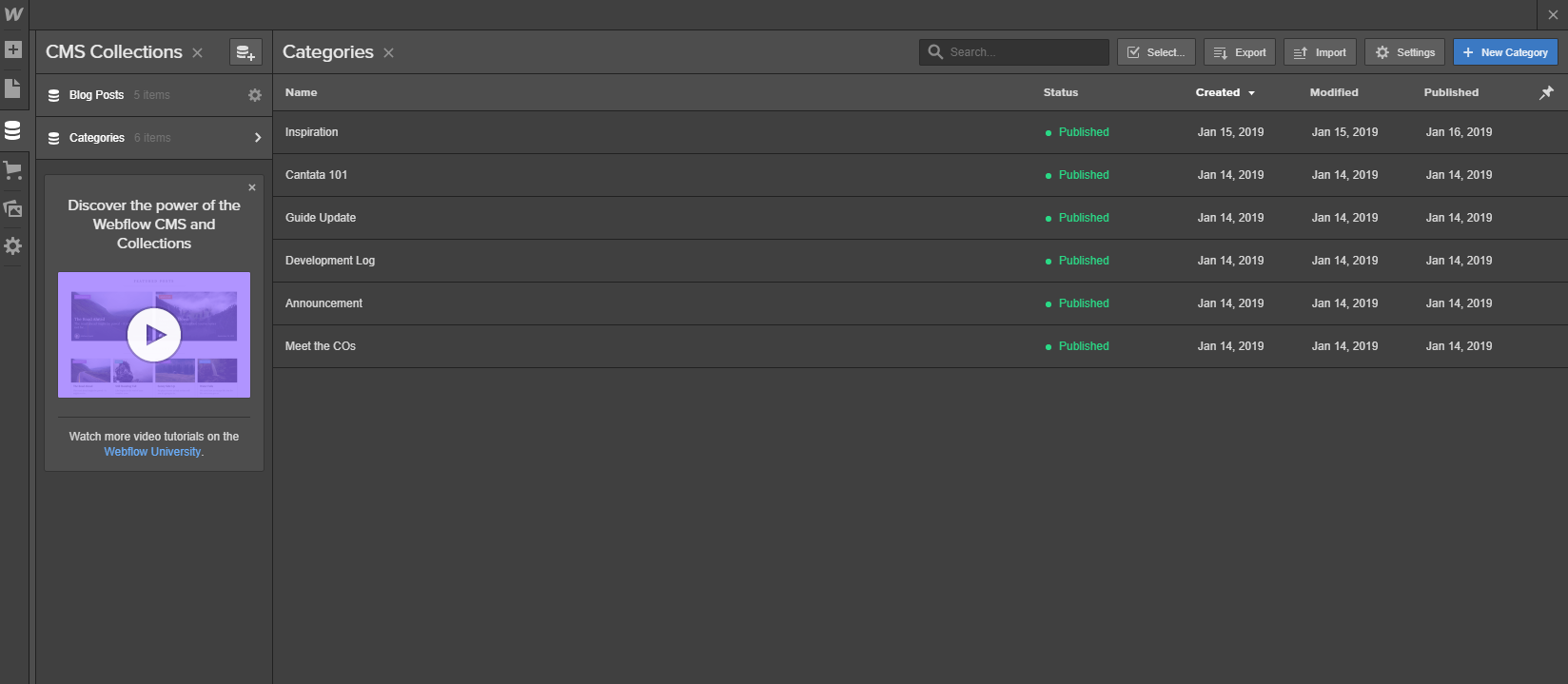
Because the announcement item is now linked to the category collection, I can dynamically populate the "related" section on a post's page with other posts that share that same category!:
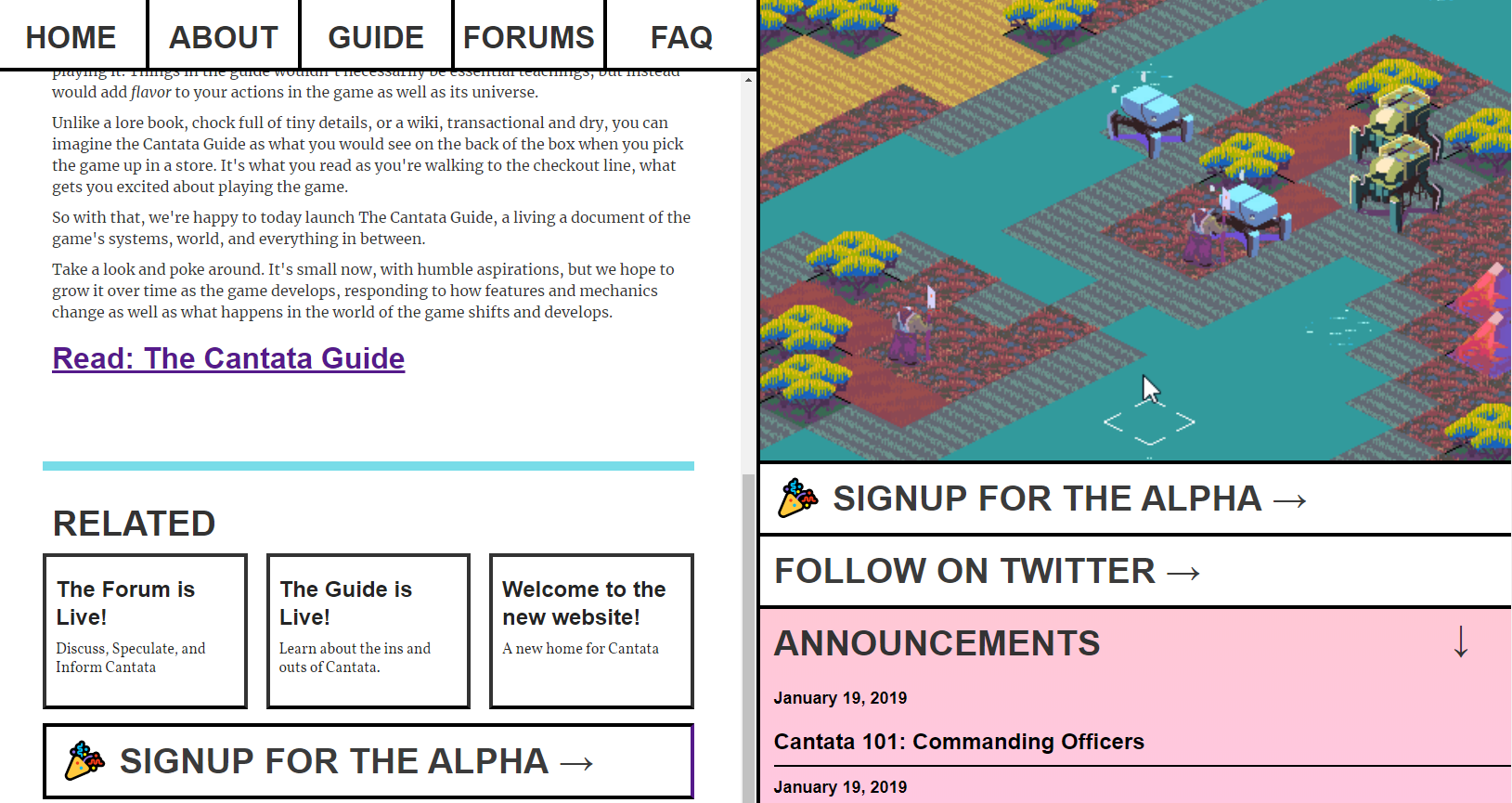
Note too, this is still all without any custom code! Being able to quickly whip this stuff up in Webflow is part of the reason I chose it. As an indie dev, I don't have a TON of time to work on non-game stuff, so being able to quickly add what I want to in a site in Webflow without needing to
really learn CSS has proven a god send.
A note on style: The design of the site itself really pulls from a trend in website design known as "web brutalism". Though my site is far from some of the more wild implementations of brutalism, I do think it may be the first games website to really lean into this aesthetic and seem
different than other blog based game sites. I just felt like all game sites looked the same, so wanted to pull from a current website trend and make something that looked unique!
For more brutalist websites, check out this great index here.The ForumsThe forums are running on the popular forum software
Discourse. They are self hosted on a DigitalOcean droplet. I set it up using their getting started guide and found the process overall pretty painless. The weirdest thing was probably setting up the mail server backend, which I did not anticipate, but their guide walks you through it pretty well and enough people use Discourse with enough DNS providers that you can pretty easily find guides on how to do what you need to do online.
One cool aspect of the forums is how they tie into the main site as a comments portal. I didn't want a dangling comments account for my site and wanted people who were posting to be true members of the community, so I used
Discourse's native ability to be embedded as a sites comments in the Webflow site to achieve this! In addition to standard web tags, Webflow supports the ability to inject custom code into a site, so I just embedded the requisite code inside my site at the bottom of a post, and it works!
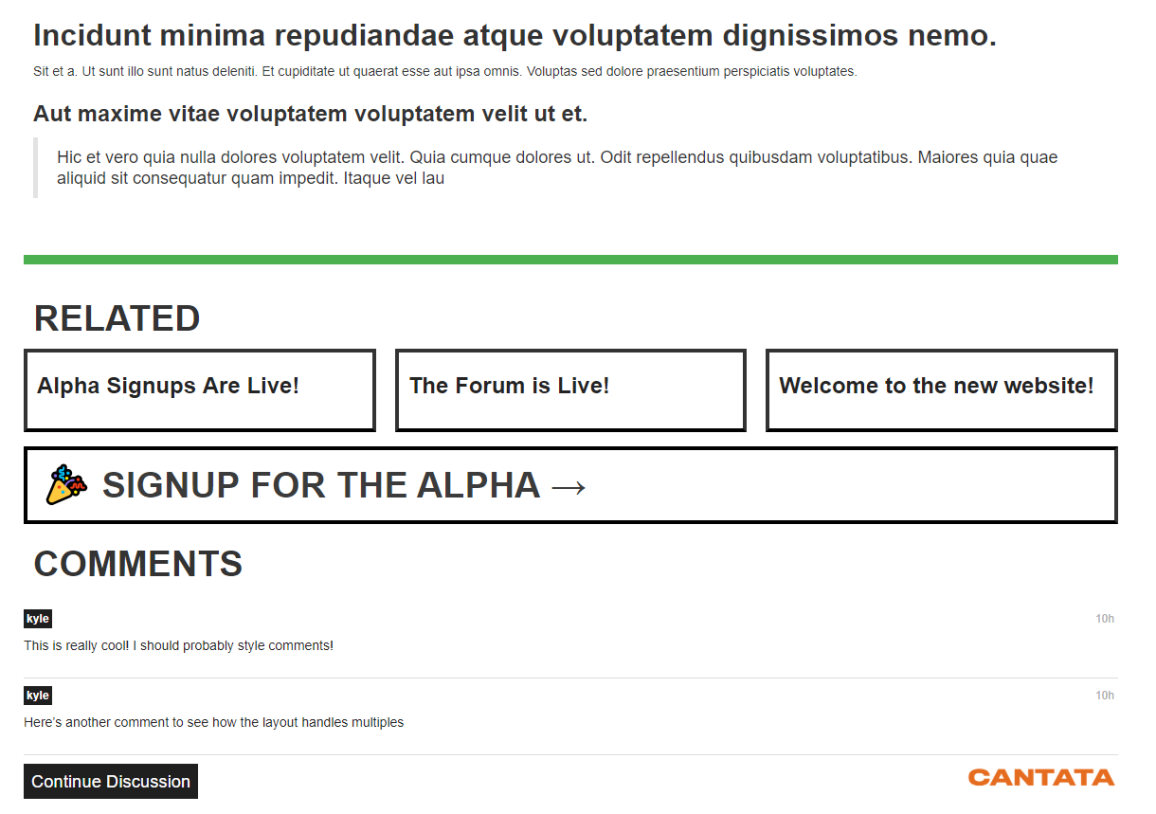
Setting up the Discourse forums in general was also really easy, so shout out to the whole team there for building a really great piece of software.
The GuideThe guide may be the weird one for a lot of people, because though it looks like a website (and technically is), it's actually built in a tool called
Notion. Notion is kind of a "do everything" too - docs, spreadsheets, etc. - that is
so hot right now and frankly I love it.
The guide leverages the ability for a Notion page to be published publicly (with no git nonsense needed), so it means I can easily update the guide and have those changes immediately reflected at the guide's link. Additionally, the guide is a collaboration between the whole team, and is one of the only collaborative writing tools that allows you to write with others, offer comments, style, etc. and have that be reflected on a live website immediately. Most other solutions would have required a post-edit step of pushing changes to some remote git repo and that starting a doc building process, and then... it goes on.
Notion empowers the whole team to easily contribute to the guide, with nearly no overhead or barrier to publishing. They also plan to add custom domains in the future, so hopefully soon it can have a more reasonable URL like guide.cantata-game.com.
And with that I'll bring this post to a close. Thanks for reading! Again, if you're interested in the game, join the forum below!
JOIN THE CANTATA FORUMS
 Community
Community DevLogs
DevLogs CANTATA - (1.0 OUT AUGUST 15th) Sci-Fi Advance Wars + Logistics + Base-building
CANTATA - (1.0 OUT AUGUST 15th) Sci-Fi Advance Wars + Logistics + Base-building Community
Community DevLogs
DevLogs CANTATA - (1.0 OUT AUGUST 15th) Sci-Fi Advance Wars + Logistics + Base-building
CANTATA - (1.0 OUT AUGUST 15th) Sci-Fi Advance Wars + Logistics + Base-building
